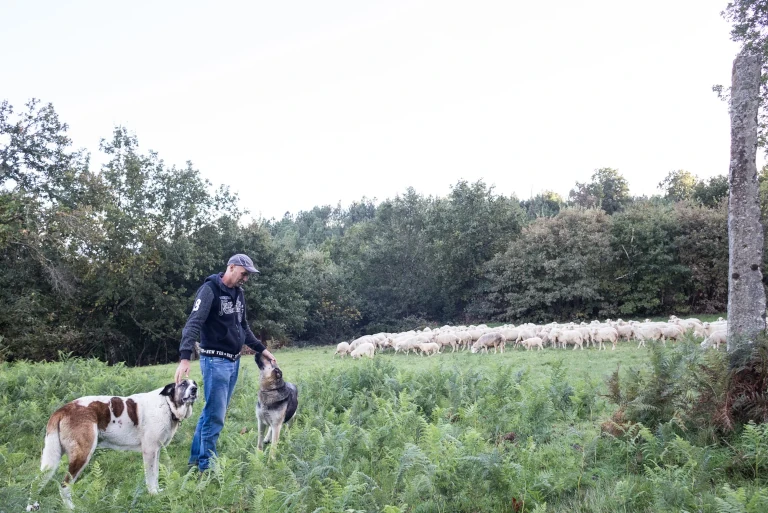Lithium may be at the heart of the green transition, but mining the metallic element also causes damage to natural environments. In lithium-rich Portugal, modest rural communities join national outrage against governmental deals bypassing local economies and threatening livelihoods. A photo essay.
On first impression Covas do Barroso, nestled between green mountains in northern Portugal, is no more than a handful of stone houses gathered around the junction of two roads. The village, with around 150 inhabitants, has traditionally relied on livestock farming and agriculture for its local economy. But Covas do Barroso’s land is also valuable for another reason: it is rich in lithium reserves. And, since 2016, Savannah Resources, a British company with solely Barroso on its books, has been developing plans for an open pit mine in the area. The company estimates that the mine could be exploited for 12 years, would employ up to 250 workers, and supply enough lithium for 500,000 electric car batteries each year.
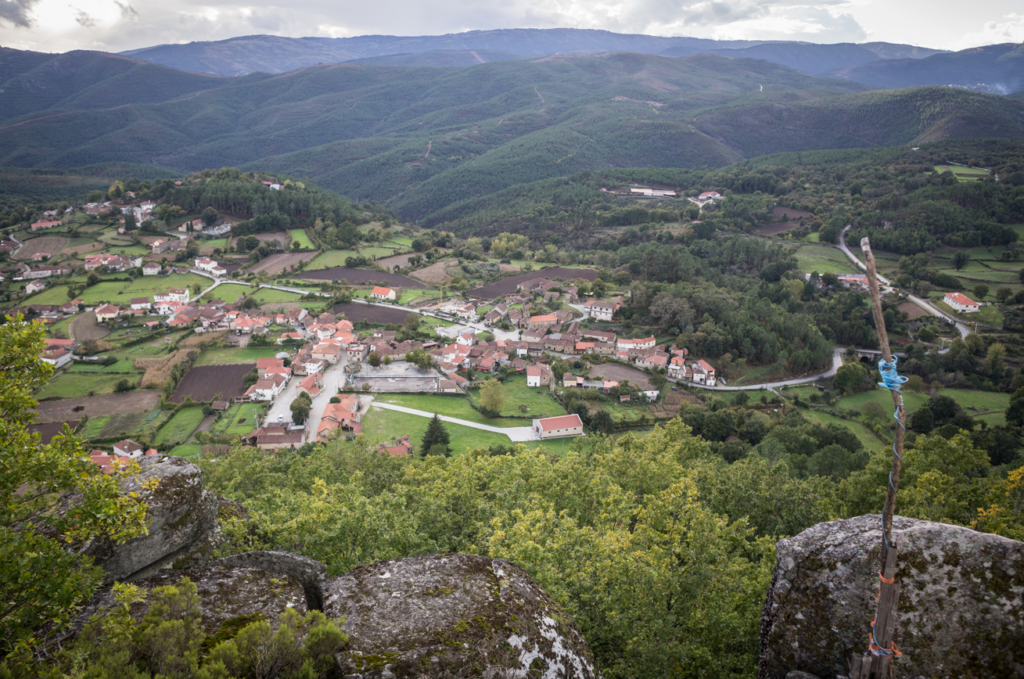
An overview of Covas do Barroso. Photo by Giacomo Sini and Dario Antonelli. ©Giacomo Sini & Dario Antonelli
A controversial deal
Portugal is known as the largest and, indeed, the only significant site of lithium production in the European Union. To date, the country’s lithium has only been mined in combination with feldspar to supply the ceramic industry. But the growth of global lithium production related to the manufacture of batteries, especially for electric vehicles, has prompted the development of a specific production chain in the EU. As part of its Critical Raw Materials Act, the EU Commission stipulated that by 2030 at least 10 per cent of Europe’s demand for critical raw materials such as lithium should be met from domestic supplies. In Portugal, mining companies have received approval for new projects in areas such as Barroso, Romano, Alvarrões, and Argemela. And requests for exploration are pending in many other areas of the country.
The Portuguese Environment Agency gave its preliminary approval for the environmental impact assessment of the Barroso project at the end of May 2023, and construction is scheduled to start in 2024. But many residents think the Savannah Resources mine should not be built. From the outset locals opposed to the project founded Unidos em Defesa de Covas do Barroso (UDCB), an association organising demonstrations, assemblies, protest camps, and legal action.

A small stone quarry in the area near Romainho, in the Covas do Barroso area. The area is
historically an excavation zone for the construction of stone houses. ©Giacomo Sini & Dario Antonelli
The mining plan is also highly controversial with the region’s wider population. And in Portugal, mining is more than just a local issue: exploration concessions in Barroso and Montalegre were at the centre of an investigation into corruption which saw raids on parliamentary offices in November 2023 and led to Prime Minister António Costa’s resignation. The banner welcoming visitors to Covas do Barroso that states “Não às Minas, Sim à Vida” (No to Mines, Yes to Life) poses inescapable questions to the global green transition model.
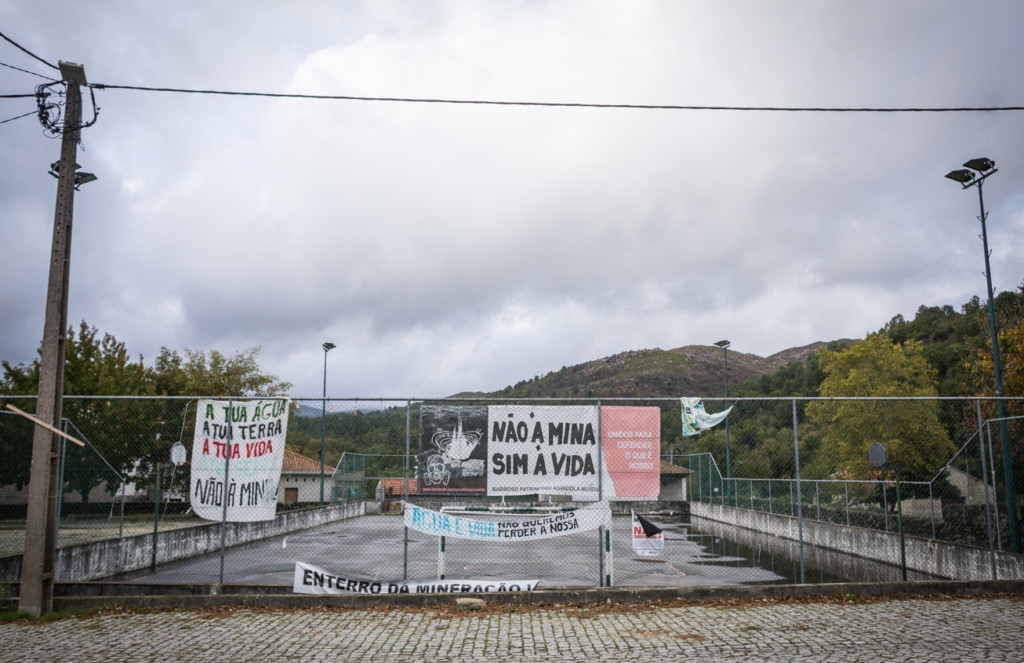
Some banners in the center of Covas do Barroso against the opening of the mine. “No to the
mine yes to life” reads the main one. ©Giacomo Sini & Dario Antonelli
In defense of Barroso
The audience contains students, professors, researchers, interested people. “It is a falsification to talk about a just green transition,” says Mariana Riquito, researcher at the University of Coimbra. “It cannot be just if it does not respect the autonomy of local populations. It cannot be a transition if, to implement it, you intensify the consumption of fossil fuels. It cannot be green if it only considers the problem of emissions and not the consequences of the mining and extraction industry.”
A lecturer asks whether the mine project might still represent a development opportunity for the area. Nelson calmly replies that “Covas do Barroso has been a FAO World Heritage Site for agriculture since 2018. The mine is incompatible with the development of the area. They talk to us about compensation, minimisation, landscape restoration. But a relationship with nature is the only reason to live in such an isolated place. What development is possible for an area where no one would want to live?”
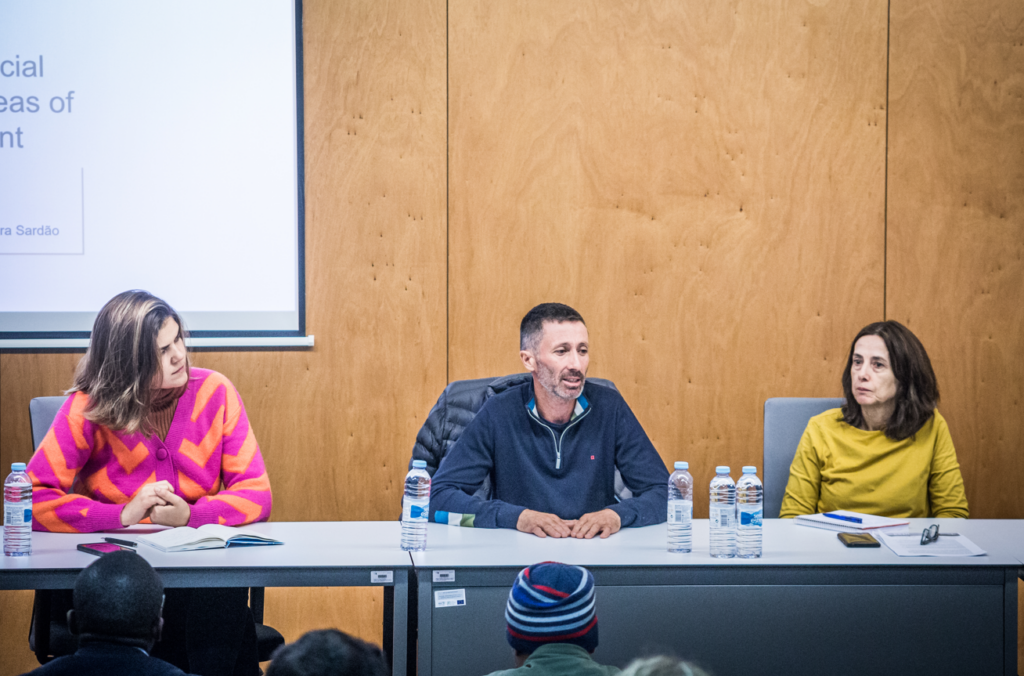
On the left, Mariana Riquito, Portuguese university researcher and Nelson Gomes, president of
the association “Unidos em defensa de Covas do Barroso” during a conference organized by the
“UTAD – University of Tras os Mones e Alto Douro” in Villa Real, northern Portugal. ©Giacomo Sini & Dario Antonelli
Vila Real, north-eastern Portugal, 24 October 2023. Classroom B.02 at the University of Trás-os-Montes and Alto Douro is full. All attention is directed towards the first speaker of a public discussion organised by the Centre for Transdisciplinary Development Studies (CETRAD): “My name is Nelson Gomes and I live in Covas do Barroso.” As president of the UDCB, Nelson explains that the mines would completely disrupt the environment of the valley and the lives of its inhabitants. “They accuse us of being unwilling to sacrifice ourselves for the planet,” says Nelson, “but we already sacrifice ourselves with our way of life and farming.”
According to Nelson, the mining project has broad implications: “We need to question the energy transition as a model centred on extractivism. Alternatives, says Nelson, would include the development of public transport, including in rural areas, instead of simply replacing fossil-fuelled private cars with electric ones. “Bear in mind,” warns Nelson, “such an imposition could one day happen to you too, where you live.”
Local impacts
A stream, swollen after the rains, washes over the road leading to the village of Alijò. “I come all the way here because I can use some of the pastures for grazing,” says Paolo, a farmer with 170 sheep. His business, like that of other shepherds and farmers from Covas do Barroso, is threatened by lithium mining. “Part of my land is in danger of being included in the mining area. Where will I graze the sheep then?” Paolo is worried that the valley’s sources of water will be compromised: “With the drilling, some farmers are already complaining about the lack of water in the wells. What will happen to the troughs and streams?”
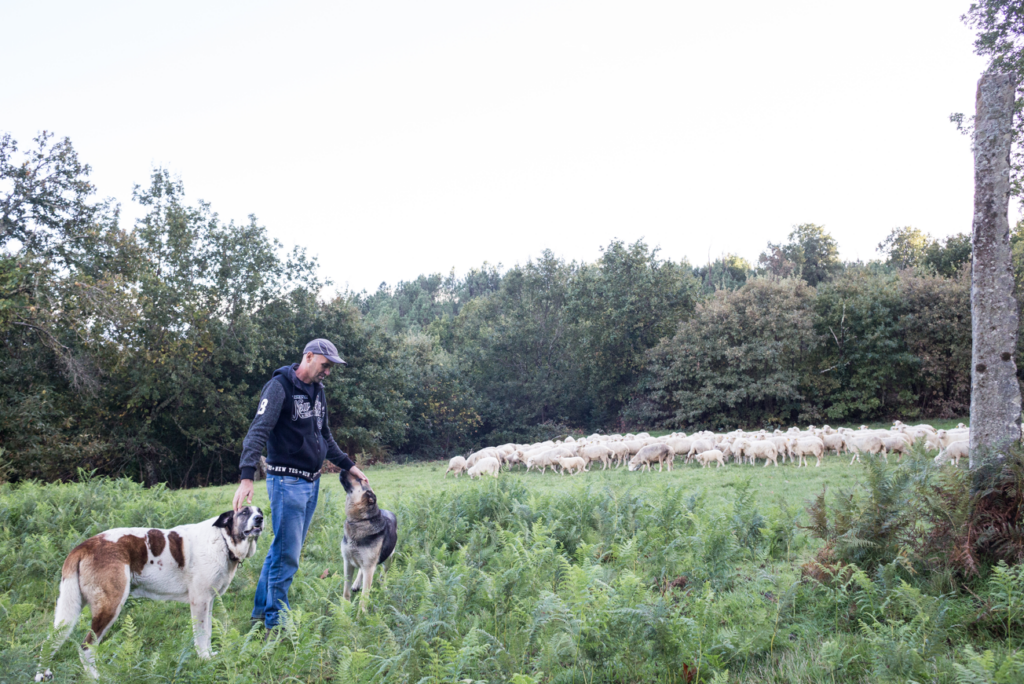
Paulo Pires, a shepherd from Covas do Barroso, grazing his flock of sheep near Alijò, a village
4 km from Covas do Barroso. Paulo is one of the local residents opposing the construction of the
Savannah Lithium mine. ©Giacomo Sini & Dario Antonelli
While recognising the need for an energy transition, Paolo feels it is important to broaden the vision: “Of course lithium is needed for batteries. But we should ask ourselves what we use this energy for. Will lithium make consumerism sustainable? And what green transition are we talking about if we destroy green spaces? Look,” he exclaims, laughing, “everything here is green!”
“We opposed the lithium mine from the beginning,” says Mayor of Boticas Fernando Quieroga sitting at his desk in the municipal headquarters for Covas do Barroso, almost 20 km away from the village. “It is a different kind of mining activity from those that were already present in the area,” he explains. “It may affect the living conditions and health of the members of our community.” In line with Paolo, he considers that the area’s freshwater supply, specifically underground sources, are a key concern: “We are very alarmed because there is a risk that the mining will compromise the phreatic level.”
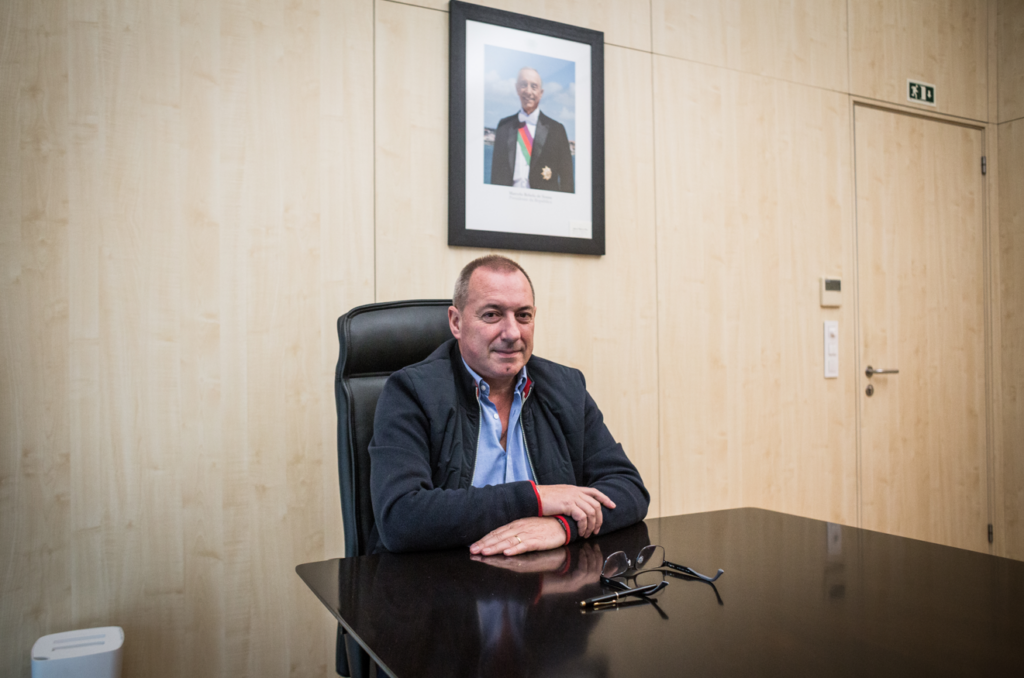
Fernando Quieroga, president/mayor of the Câmara municipal of Boticas. The mayor is
outspoken against the construction of the Covas Lithium’s mine. In this photo is seen in the
mayor’s office in Boticas. ©Giacomo Sini & Dario Antonelli
“They say that such a sparsely populated area can only gain from such a project,” Quieroga says with a sarcastic grin, “but if we look at the lithium value chain in addition to the mining – battery production, electric car fabrication, and, finally, battery recycling – all these industrial activities will be handled elsewhere. Nothing will remain here.” On the region’s future prospects, he uses plain words: “As far as it is within our power, we will not provide authorisations. If the government decides to go ahead, it risks facing a popular uprising.”
“When I opened, more than twenty years ago now, the village was lively,” says the elderly bartender from the only bar in Covas. “Now there are fewer and fewer inhabitants. Even the school closed down a long time ago.” In the face of inexorable depopulation, the bartender perhaps hopes that the mining project will bring development and new customers, and is less critical of it than most other locals. “My bar is for everyone, it doesn’t take sides on the lithium issue!”

The only open bar in the small village of Covas do Barroso in northern Portugal. In this area,
designated by the FAO as world agricultural heritage, the British company Savannah wants to build
the largest lithium mine in Europe. ©Giacomo Sini & Dario Antonelli
But, standing near the door, a customer with a drink in hand expresses a different view: “Of course some have sold their land [to the mining project]. But how can you abandon everything? With that kind of money, it is not possible to move and change your life,” he says.
Fighting back
“Now it’s good!” Mariana, who has just finished cleaning the entrance to the former primary school in Covas do Barroso with her friend Paloma, looks pleased with their work. Closed for many years, the building has been reborn as A Sachola, thanks in part to the initiative of young people who, like them, moved here to support the struggle against mining. The banner at the entrance reads Encontro Solidario Anti-Extractivista (Anti-extractivist Solidarity Meeting). “We have to finish setting up the space,” Mariana explains, gesturing to the large room inside. “In a week’s time, we’re going to have a film screening. We want this space to be a place of aggregation and sociality for the inhabitants of the village but, at the same time, a meeting point between the local community and those from outside.”
Aida Fernandes, president of Covas do Barroso’s common land association, Baldios, is keen to protect the communal areas of land most threatened by mining projects. “Savannah has bought some land, but a lot of drilling is taking place on the commons, especially in the forests,” explains Aida. “We aim to stop the works, claiming the use of that land for the community.”
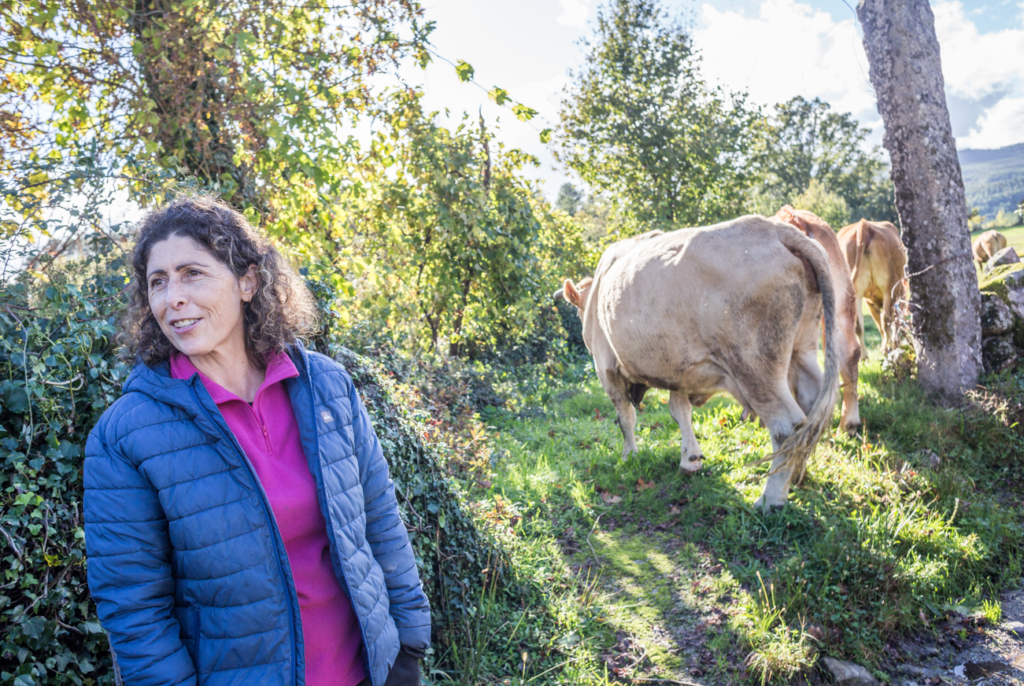
Aida Fernandes, resident of Covas do Barroso and breeder. She is the president of the “Baldios
‘communal land – land for civic use”, and is against the construction of the lithium mine. ©Giacomo Sini & Dario Antonelli
In recent years, many people have come to Covas do Barroso to find out about the struggle of its inhabitants. Aida recounts how exchange situations are often reciprocal: “Last October we participated in an international meeting against mining in Spain, because it is important to be united in the face of such a powerful counterpart.”
Winning the war
Project developments for the massive exploitation of lithium reserves have provoked protests from the inhabitants of many rural areas of Portugal. As in Barroso, committees and movements have also been formed in Serra de Estrela, Argemela, and Penalva, to name but a few. A plurality of voices has united on many occasions: for unified demonstrations in Lisbon, for assemblies in Coimbra and elsewhere, in an anti-mining protest camp that was held last summer in Covas do Barroso.
From the top of the Olhar do Guerreiro viewpoint, the entire valley can be seen. Drilling areas, partly covered by vegetation, can be seen all around. Aida points to a spot southeast of the village, an expanse of pine trees on a hillside. “Over there is the area that they are really focusing on. It seems to be the richest [in lithium],” she says. “Just think, that whole area is going to become an open pit. It will be dug down 150 meters with a diameter of 500 meters. 80 per cent of the material will be waste. The remaining 20 per cent will have to be washed, even chemically, to extract the lithium fitted there.”
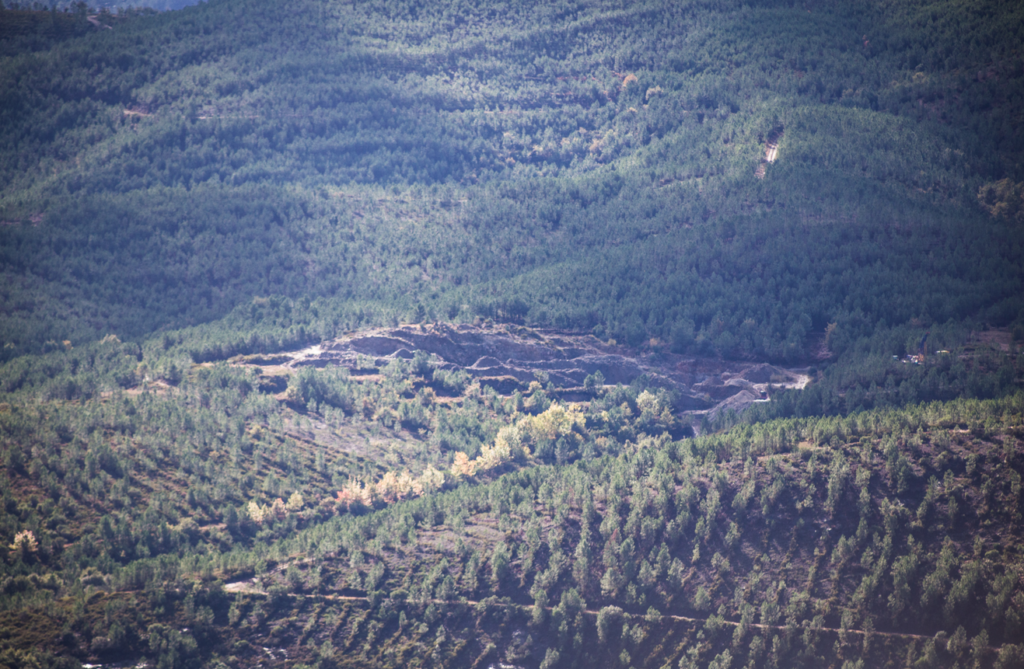
The area around Covas in Barroso, designated by the FAO as a World Agricultural Heritage
site. In the centre among the greenery the first excavation of Savannah, the British company that
has plans to build a Lithium mine in the area. ©Giacomo Sini & Dario Antonelli
Recently, the struggle against lithium extraction in Covas do Barroso has received broad support from diverse sectors of society. “This is not about slowing down the work and obtaining small results,” says Aida decisively. “It is not enough to win battles. You have to win the war!”
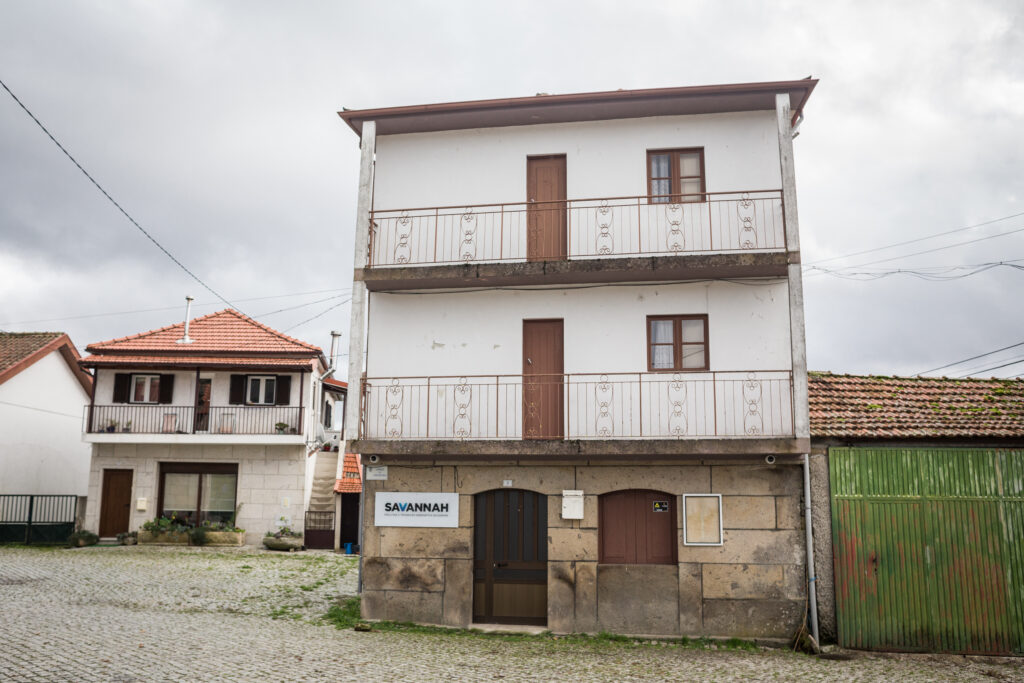
The headquarters (information point) of Svannah in Covas do Barroso, in the north of Portugal. Savannah is the British company that wants to build the largest lithium mine in Europe within the Barroso area. ©Giacomo Sini & Dario Antonelli
As the sun goes down, a farmer crosses the central village square, leading his cows to the stable with a hoe slung across his shoulder. On one side is the sports field, where the protest camp against lithium mining was held, countless colourful banners are hanging on the fence. They call out against mining, for village life, for water, and for nature. Directly opposite, on the other side of the square, is the small Savannah office, hidden behind a dark door, guarded by cameras.


